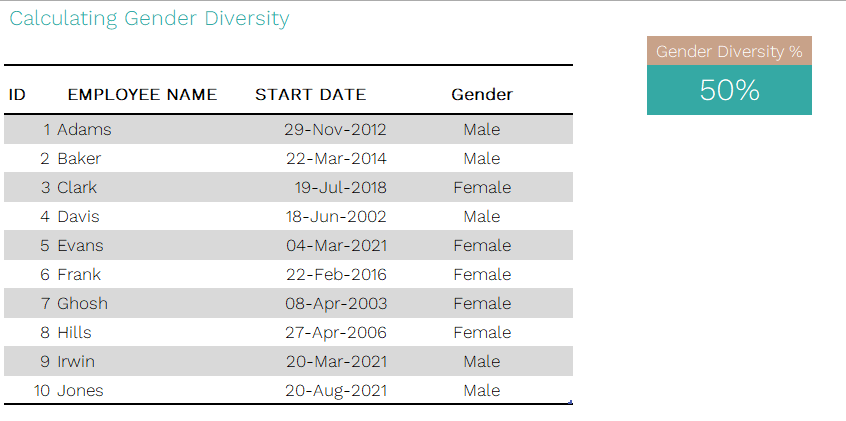Diversity %
Diversity % - HR Metric - Calculation
What (Definition)
Diversity is measured as % of employees in a specific defined group (example: Female Gender) out of all employees in an organization and then compared against expected diversity.
Why (Benefits)
To begin with, having a diverse workforce that represents the population is only fair and ensures no discrimination.
In addition, studies have shown that a diverse workforce is more creative, productive, and happy. (McKinsey & Company report)
A Diversity metric allows you to monitor the actual diversity and evaluate that you are meeting your diversity goals.
Companies may also refer to this as Diversity, Equity and Inclusion (DEI) program or policy and the report as DEI report.
How (Calculation)
Formula:
Diversity % = [Count of Employees in a specific subgroup / Count of all employees in an organization]
Example: 45% of employees are Female while expected is 50%.
Diversity of the employees in your company can be measured along different dimensions like Gender, Ethnicity, Race, Age and more. The actual dimensions and goals can vary by country and company.
We will illustrate a couple below.
Gender Diversity
Gender Diversity Calculation with an example
In the above example, we have 5 female employees and 5 male employees.
Count of Employees by Gender
If we are measuring % of females in the organization, it is 5 out of 10 that is 50%.
Racial Diversity
Similarly, we can measure racial diversity. If we identify certain races as minority and we want to measure % of employees who belong to a race that is a minority.
Racial Diversity Calculation using an example
Distribution - Count of employees by Race
Here, we have 4 employees belonging to minority and thus we have 40% as the result.
Related HR Metrics
Now, it’s your turn
How do you measure Diversity in your organization? What methods do you use? What factors do you track? Please share your thoughts. I look forward to learning from you.








What is Quality of Hire Metric? How and Why to calculate it?